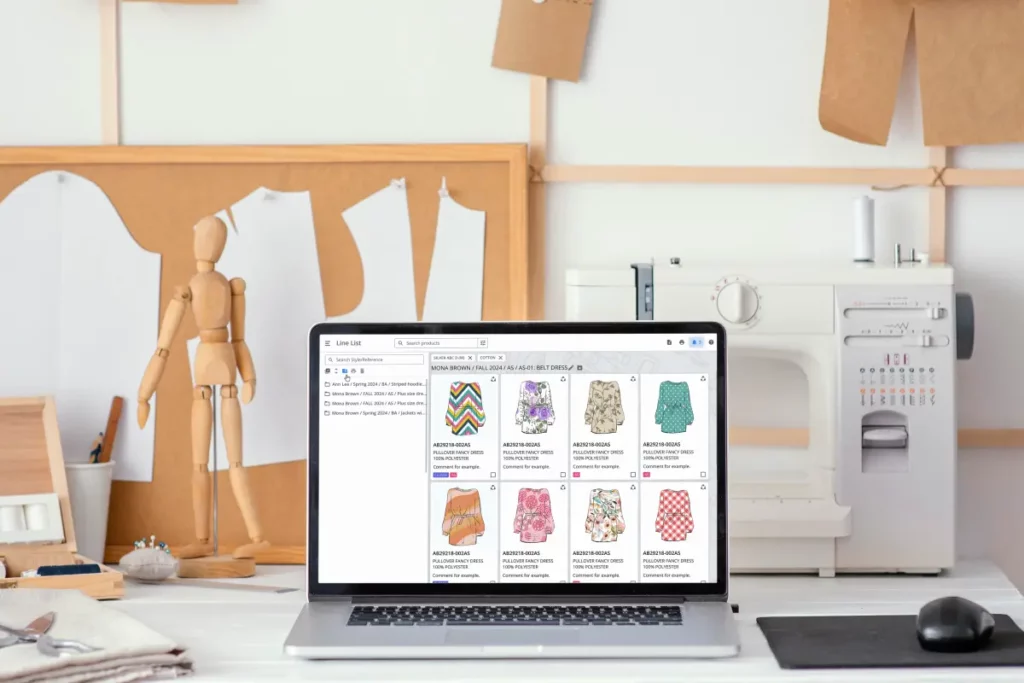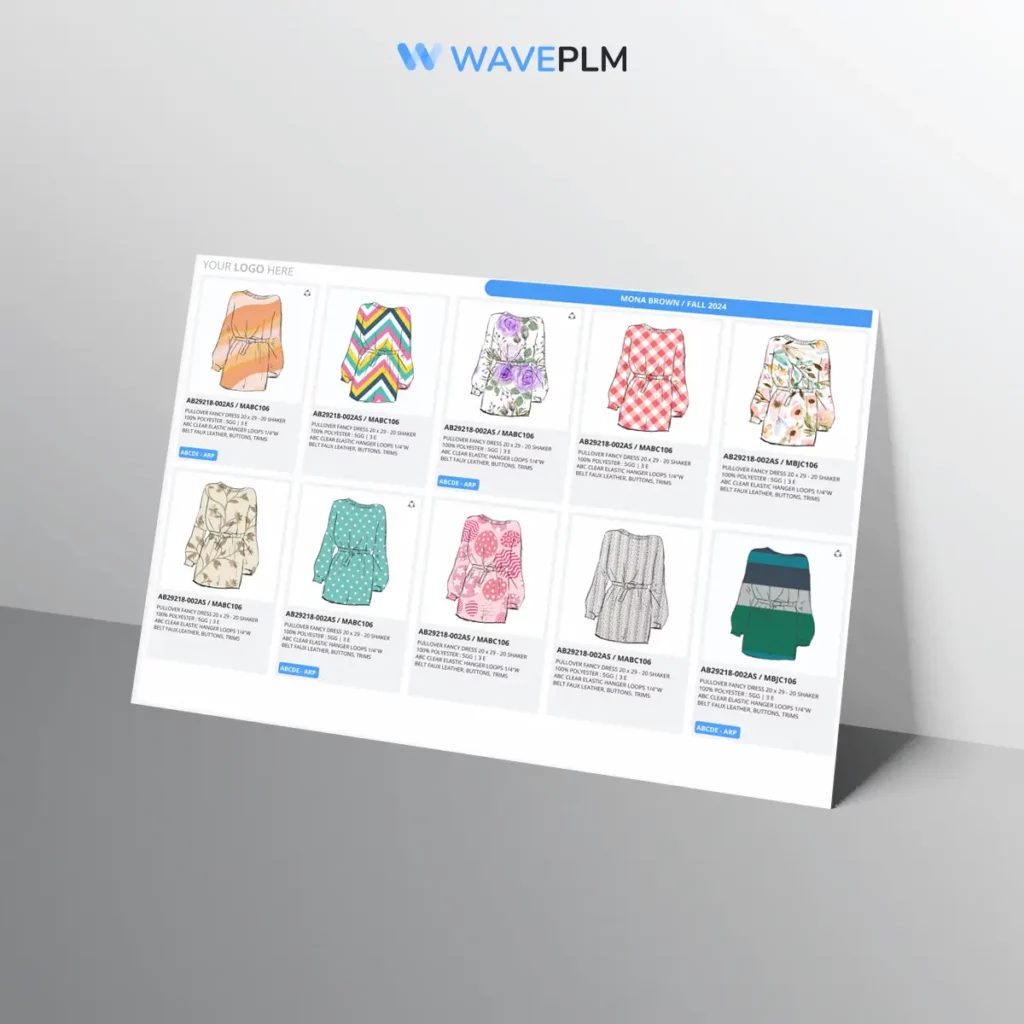
In the realm of fashion and retail, a compelling presentation of products is paramount for success. Among the many tools at a brand’s disposal, the line sheet stands out as a crucial element in showcasing products effectively. But what exactly is a line sheet? Why is it indispensable for businesses in the fashion industry? This article aims to delve into the depths of this essential document, exploring its definition, purpose, components, and best practices for creating one that captivates and persuades.
What Is a Line Sheet?
A line sheet serves as a comprehensive overview of a brand’s product offerings for a specific season or collection. It acts as a sales tool, providing buyers with vital information about each item, including product details, pricing, and available variations. Essentially, a line sheet is a bridge between a brand and potential buyers, offering them a glimpse into what the brand has to offer in terms of products and style.

Purpose of a Line Sheet
The purpose of a line sheet extends beyond mere product presentation; it is a strategic tool that serves several essential functions within the fashion industry. Let’s delve deeper into each aspect of its purpose:
1. Facilitating Buying Decisions
At its core, a line sheet aims to streamline the buying process for retailers. By providing comprehensive information about each product, including details like style numbers, color options, sizes available, materials used, and pricing, it empowers buyers to make well-informed decisions swiftly. In an industry where time is of the essence, especially during busy buying seasons, a clear and concise line sheet can be the difference between a successful sale and a missed opportunity.
2. Building Brand Awareness and Identity
A line sheet isn’t just a catalogue of products; it’s a reflection of the brand’s identity, aesthetic, and values. Through carefully curated imagery, consistent branding elements, and engaging product descriptions, a line sheet serves as a visual representation of what the brand stands for. It offers retailers insight into the brand’s style, quality standards, and overall vision, helping to forge a deeper connection and fostering brand loyalty.
3. Establishing Credibility and Professionalism
A well-crafted line sheet speaks volumes about a brand’s professionalism and attention to detail. By presenting products in a structured and organized manner, accompanied by high-quality images and accurate information, brands convey a sense of reliability and trustworthiness to potential buyers. This credibility is essential, especially for emerging brands seeking to establish themselves in the market and compete with established players.
4. Driving Sales and Revenue Growth
Ultimately, the primary goal of a line sheet is to drive sales and generate revenue for the brand. By showcasing products in an appealing and persuasive manner, a line sheet encourages retailers to place orders and stock the brand’s merchandise in their stores or online platforms. Furthermore, by providing clear pricing and ordering information, it removes barriers to purchase and streamlines the transaction process, maximizing the likelihood of closing deals and generating sales.
5. Facilitating Communication and Collaboration
Beyond its role as a sales tool, a line sheet serves as a communication tool that facilitates collaboration between brands and retailers. It provides a common reference point for discussing product offerings, pricing negotiations, and inventory management. Additionally, by including contact information and ordering details, it enables seamless communication between the brand and potential buyers, fostering a collaborative and mutually beneficial relationship.
Components of a Line Sheet
Product Images
High-quality images are the cornerstone of a captivating line sheet. They provide buyers with a visual representation of the products and help them envision how the items will look in their stores or online platforms. When selecting images for your line sheet, ensure they are well-lit, showcase the product from various angles, and accurately represent the colors and textures. Investing in professional product photography can significantly enhance the visual appeal of your line sheet and increase the likelihood of attracting buyers’ attention.
Product Details
The product details section of a line sheet contains essential information about each item in your collection, like a tech pack. This includes:
- Product Name: A descriptive and catchy name that reflects the style and personality of the product.
- Style Number: A unique identifier assigned to each product for easy reference and tracking.
- Color Options: Specify the available color variations for each product, along with corresponding color codes or names.
- Sizes Available: Provide information on the sizes offered for each product, including standard sizing or any special size options.
- Materials Used: Detail the materials or fabrics used in the construction of the product, highlighting any special features or characteristics.
- Other Specifications: Include additional details such as care instructions, special features, or product dimensions to help buyers make informed decisions.
Pricing
Clear and transparent pricing information is essential for buyers to assess the cost and determine the profitability of carrying your products. The pricing section of a line sheet typically includes:
- Retail Price: The suggested retail price at which the product will be sold to consumers.
- Wholesale Price: The discounted price offered to retailers for purchasing the product in bulk or wholesale quantities.
- Discounts or Special Offers: Highlight any discounts, promotions, or special offers available to buyers, such as volume discounts or seasonal sales.
- Minimum Order Quantities: Specify any minimum order requirements that buyers must meet to qualify for wholesale pricing or to place an order.
- Minimum Order Requirements: Some brands impose minimum order requirements to ensure that orders are financially viable and cost-effective to process. This information should be clearly communicated on the line sheet and may include:
- Minimum Order Quantity (MOQ): The minimum number of units or total order value that buyers must meet to qualify for wholesale pricing or to place an order.
- Reorder Minimums: Additional minimum requirements for reordering specific products or restocking inventory.
Ordering Information
Providing clear and concise ordering information streamlines the buying process for retailers and facilitates efficient communication between the brand and its customers. The ordering information section may include:
- Contact Details: Provide the brand’s contact information, including email addresses, phone numbers, and website URLs, for buyers to reach out with inquiries or place orders.
- Ordering Deadlines: Specify any deadlines or cutoff dates for submitting orders, especially for seasonal collections or limited-edition releases.
- Payment Terms: Outline the accepted payment methods, payment terms, and any applicable credit or payment policies.
- Shipping Information: Detail the shipping options, delivery times, and shipping costs associated with ordering products from the brand.
Overall, by carefully crafting each component of your line sheet and paying attention to detail, you can create a compelling presentation that resonates with buyers and drives sales for your fashion brand.

Conclusion
To sum up, in the competitive world of fashion retail, a well-executed presentation can make all the difference in capturing the attention of buyers and securing lucrative partnerships. A line sheet serves as a powerful tool for brands to showcase their products effectively and facilitate the buying process for retailers. By understanding the purpose, components, and best practices for creating a compelling line sheet, fashion brands can elevate their sales efforts and stand out in a crowded marketplace.
In Wave PLM, we have a whole Line list functionality where you can make drafts of your products before pushing them into the production stage.





Leave a Reply